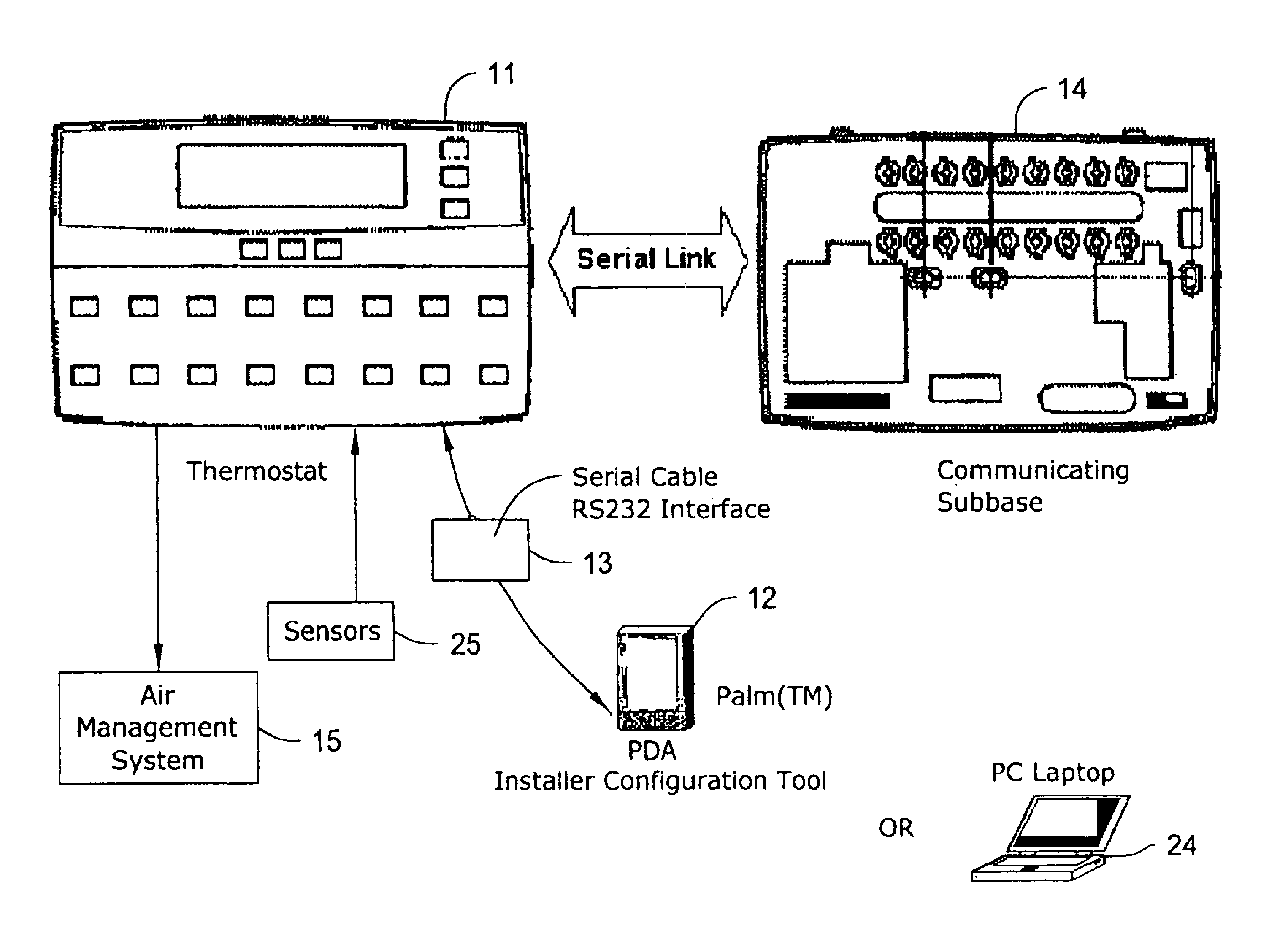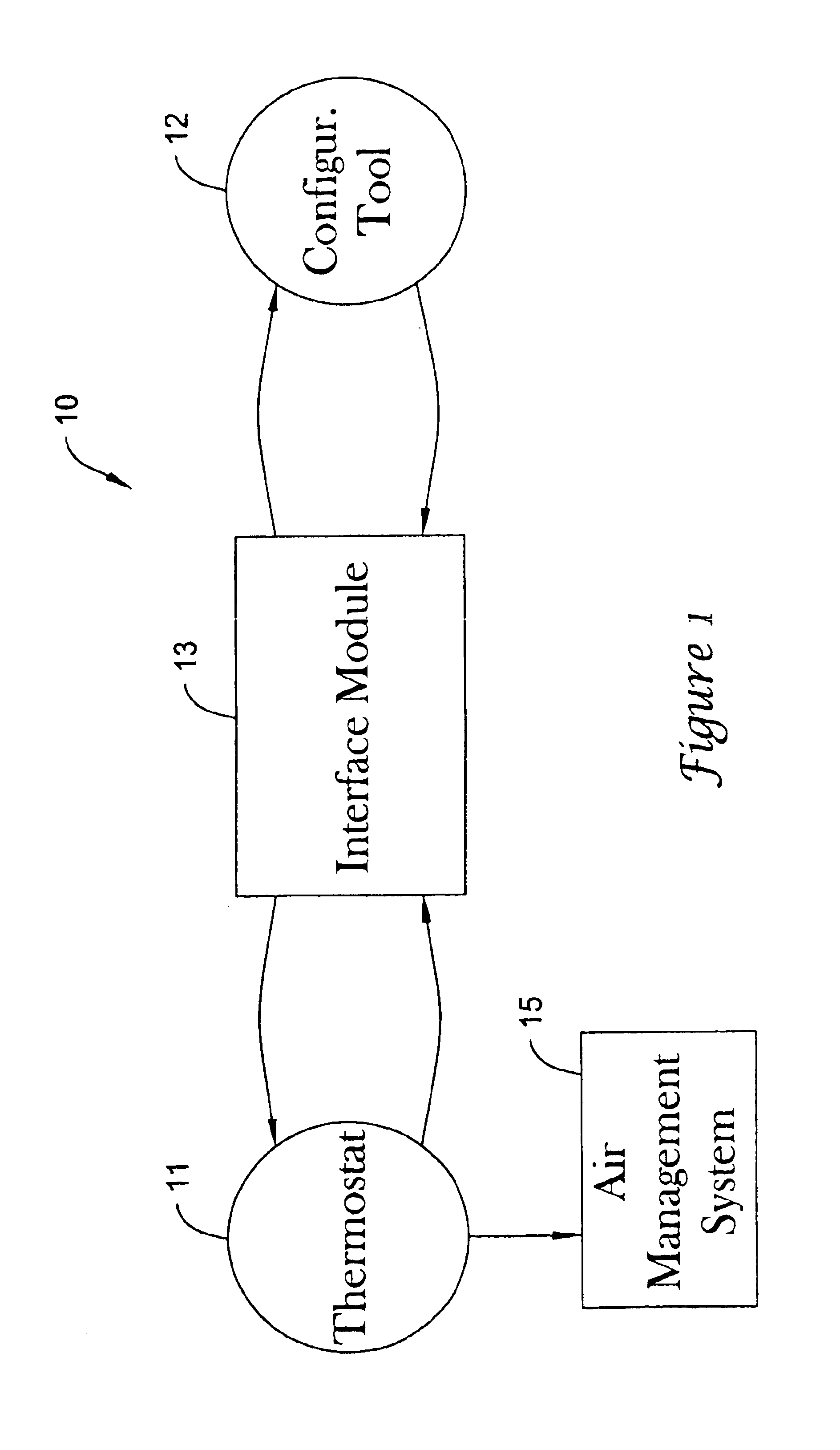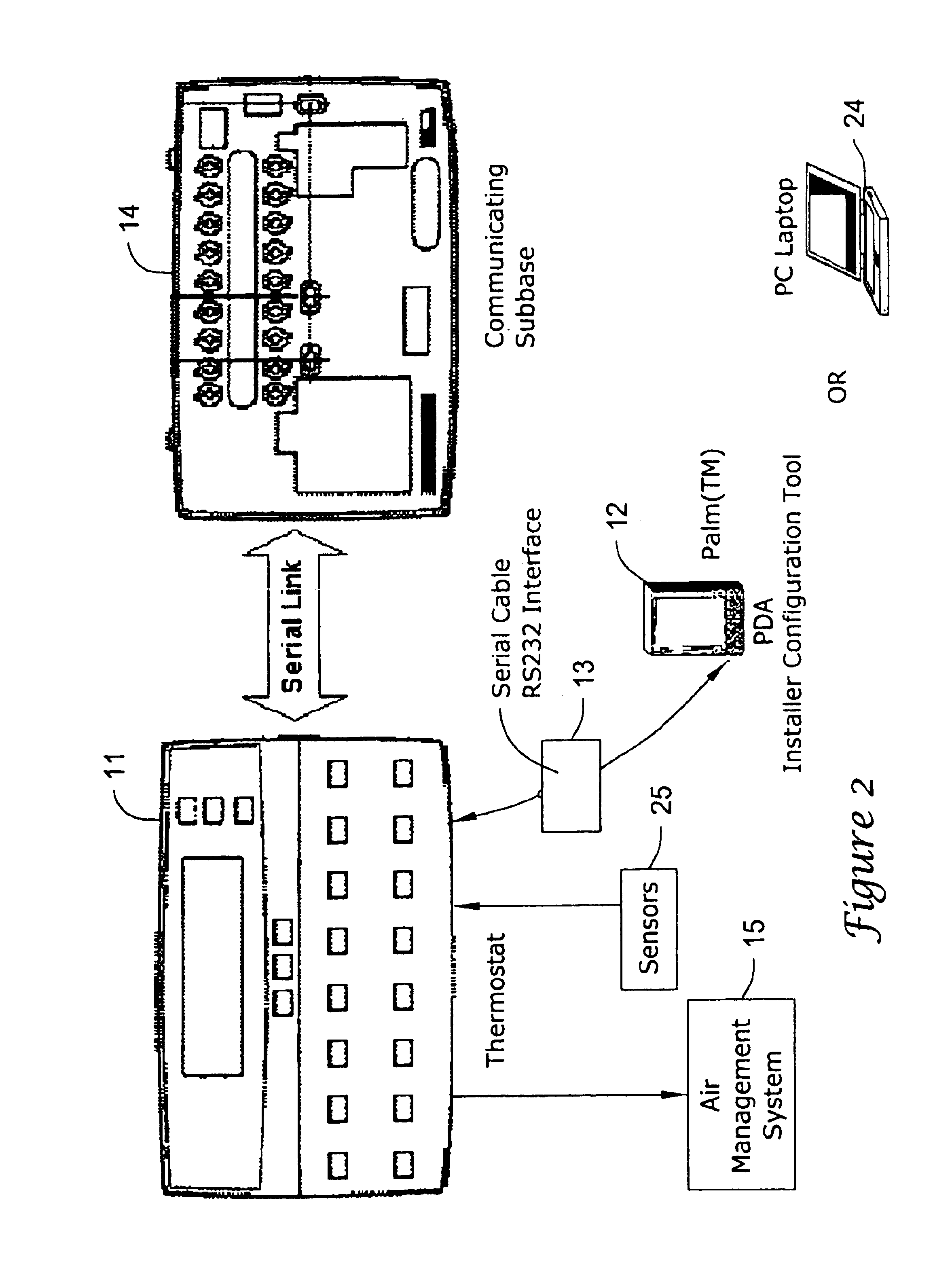The present invention minimizes the issues of complexities, user unfriendliness, and the amount of time and inconvenience involved in commissioning, testing and diagnosing a thermostat system. A personal digital assistant (PDA) may be used significantly easing such activities. PDA-based on line diagnostics may automatically discover the thermostat configuration, turn off normal controller delays, temporary override sensor inputs and set points, and verify proper output action including the monitoring the
discharge air temperature for the resulting temperature behavior based on the equipment stages activated. Problems discovered are reported, automatically recorded and the original operating parameters can be restored. This means that less expertise may be required the technicians sent to install and trouble
shoot thermostat installations.
The diagnostic application may minimize the issues of complexities, user unfriendliness, and the amount of time and convenience involved in setting up, adjusting and controlling an air
management system, such as an air handling and conditioning system. Additionally, it is possible for one at a convenient time at any place to set and adjust a thermostat, controller or computer having numerous parameters and options that may be selected for a desired operation of the air
management system. One does not need to be at the thermostat, controller or computer of the air
management system to configure, set or adjust the parameters of it. The parameters may include, but not be limited to, temperatures,
humidity,
sensor selection, volume of
air movement, fan or air mover behavior such as continuous or intermittent and speed, the percentage of added
fresh air, stages of cooling and heating at various zones, control of heat pumps, heaters and air conditioners,
modes of occupied, unoccupied or standby of respective spaces in a building, for day and night, between specific times, at certain days, for certain buildings at specific locations. The system may enable one to easily and conveniently achieve these tasks with an
interfacing of a PDA (viz., a personal digital assistant) to the
control system. These tasks may be accomplished on a PDA in an armchair remote from the facility ith the air management system.
A technical person, installer, representative or
technician, trained for configuring, setting and adjusting control mechanisms of air management system thermostats, may go to various buildings such as stores, factories or offices and do control changes for the air management systems of those places. The control mechanism of the air management system of each place may have its own specific configuration and settings which may be different from the others. The
technician may go from place to place and download specific configurations and settings with the PDA very quickly and efficiently to the air management system thermostats at these places.
By removing the thermostat configuration installer interface from the thermostat
operator interface to a PDA, as in the present system, the following benefits are noted. There is an easy to use configuration process with context checking on previous selections so only valid options are presented and errors cannot be made, and also easy to use navigation of thermostat configuration screens. Novice users may be directed to the next appropriate parameter entry screen based on the context of previous configuration selections. Configurations can be done ahead of time and downloaded quickly at installation time. Similar configurations do not have to be repeated on every device but simply recalled from storage and downloaded. The PDA based thermostat configuration application may generate a code that represents the raw configuration. This code can be recorded (for example on paper) and entered by hand quickly into the thermostat keyboard if a PDA is not available at the job site. There is context dependent control loop tuning. The thermostat PID (viz., proportional, integral and derivative gains) control loop tuning parameters may be automatically adjusted as a function of equipment type, number of output stages, output type (modulating or discrete), the
HVAC process, and other factors as desired.
A thermostat may be designed to interface to a PDA or other handy low cost device with an easy wire, IR or RF connection that will allow it do fast, accurate automatic thermostat testing, diagnosing and trouble-shooting. The PDA may automatically obtain the thermostat configuration, turn off normal controller delays, temporarily override sensor inputs and set points, and verify proper output action including monitoring the entry and
discharge air temperatures for the resulting temperature behavior based on the equipment stages activated. Problems discovered can be reported, automatically recorded and the original operating parameters can be restored. This means that less expertise is required by the technicians sent to install and trouble
shoot thermostats. Smart status reporting simplifies the thermostat installers' field-commissioning task of selecting and monitoring the appropriate
real time data. The smart
status report content and
layout may be based on a theme of management by exclusion. The report generator may respond to real
time parameter and data changes in the thermostat environment. There may be a possible web-based system in which the installer or
technician need not to go out to the site of the air management system. The installer or technician may be able to diagnose and can fix the system over
the internet,
Ethernet or the like. However, using the PDA and its
infrared interface may be as or more reasonable than the configuring or diagnosing a thermostat, its sub-base and corresponding air management system. PDA configuring and diagnostics may be utilized in residential homes as well as commercial facilities.
 Login to View More
Login to View More  Login to View More
Login to View More 


